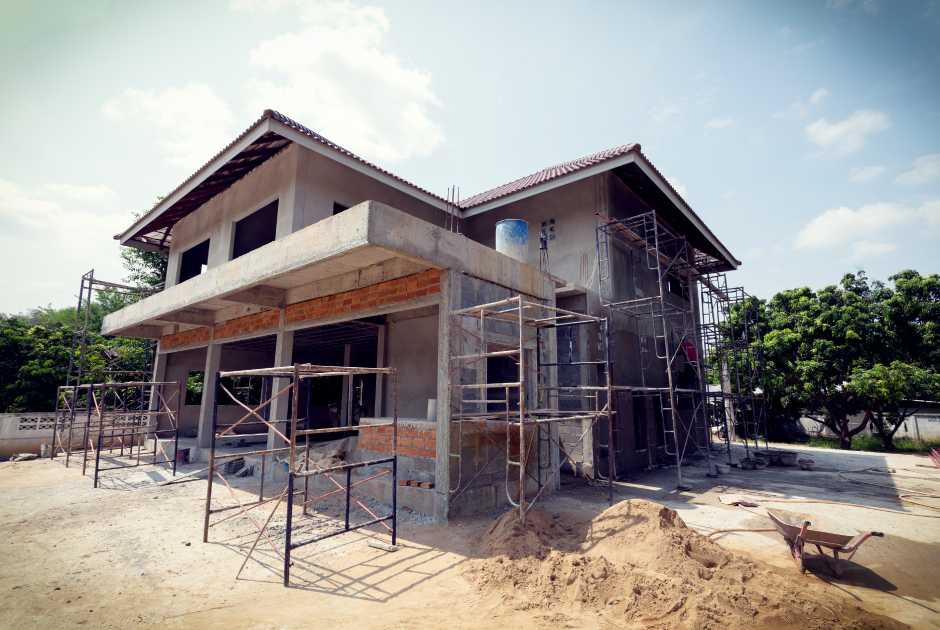Understanding construction delays: Key factors first-time home builders should know
Building your first home is a major milestone. While the process is exciting, it can also come with unexpected hurdles. One of the most common and frustrating issues faced during home construction is delay. Timelines often shift due to several external and internal factors – which affects budgets, schedules, and even personal plans.
Being aware of these factors can help you make better decisions, plan realistically, and ensure smoother execution. In this blog, we break down the main causes of construction delays and provide practical tips to help first-time home builders stay on track.
Weather conditions and their impact on construction timelines
Weather plays a crucial role in the pace of construction. In India, where climate varies greatly by region and season, delays due to weather are common.
- Heavy rain: During the monsoon, excessive rainfall delays excavation and weakens concrete curing. Work often halts due to water accumulation.
- Extreme heat: High temperatures cause rapid moisture loss in concrete, which leads to cracks and reduces durability over time.
- Cold weather: In colder regions or seasons, curing slows down. This results in weaker concrete and longer build times.
- Strong winds: Gusty winds create safety hazards and interfere with the stability of scaffolding and material placement.
The role of material shortages and delivery delays
Construction requires a steady supply of materials such as cement, steel, bricks, and aggregates. Disruptions in the supply chain can significantly slow your project.
- Higher costs: When demand outpaces supply, prices rise – this forces homeowners to stretch their budgets.
- Project delays: Delays in delivery of key materials can bring work to a standstill and prolong timelines.
- Quality compromises: Limited availability of high quality building materials may push contractors to use substitute materials, which could affect long-term results.
- Increased labor costs: Idle workers waiting for materials still need to be paid – this drives up overall labor expenses.
Labor availability and workforce management
The construction industry often experiences labor shortages, especially during peak seasons or festive periods.
- Delays: Tasks cannot move forward without the required number of workers – this leads to schedule disruptions.
- Higher costs: Labor shortages drive up wages and may force the hiring of inexperienced or temporary workers.
- Quality risks: A lack of skilled labor impacts the quality of workmanship and may lead to costly rework.
- Safety concerns: Overworked or understaffed crews face a higher risk of workplace accidents.
Design changes during construction
Making design changes once construction has started can significantly derail the project.
- Delays: Modifications often require rework or revisions, which extend the overall timeline.
- Higher costs: Changes typically involve additional labor and materials – this increases overall project expenses.
- Quality risks: Rushed or last-minute changes can compromise structural integrity and finish quality.
Financial planning issues that slow down work
Construction delays are often rooted in financial missteps, especially when funding or budgeting is poorly handled.
- Budget shortfalls: Lack of sufficient funds can bring construction to a halt or cause skipped payments.
- Cash flow problems: Irregular funding disrupts material procurement and delays worker payments.
- Poor cost estimation: Inaccurate budgeting leads to unplanned expenses and financial strain midway.
- Funding delays: Delays in loan approval or payment release impact project timelines significantly.
Contractor-related delays
Contractor performance plays a key role in timely completion. Issues often arise from lack of experience or poor site management.
- Disorganized work: Without a clear schedule, work overlaps or gets delayed due to poor planning.
- Material handling: Even good materials can be damaged if not stored or used properly on-site.
- Safety risks: Poorly managed sites are more prone to accidents, which halt work and increase liability.
Tips to minimize delays during your home construction journey
A few proactive steps can go a long way in keeping your home construction project on schedule:
- Plan every stage: Break the project into phases and outline tasks clearly to avoid confusion or last-minute changes.
- Hire experienced professionals: Skilled contractors and workers bring efficiency and reduce the chance of costly mistakes.
- Use high quality building materials: High-grade materials lower the need for repairs and help ensure long-term durability.
- Secure approvals early: Get all necessary permits and clearances before construction starts to avoid legal delays.
- Track progress: Stay involved in the construction process to catch and resolve issues early.
- Add buffers: Build extra time into your schedule to account for weather, labor, or supply-related delays.
It is important to be aware of the stages of home construction, especially as a first-time homeowner. Our guide walks you through each step so you can stay informed, avoid surprises, and make confident decisions throughout the journey.






